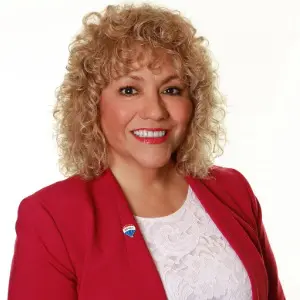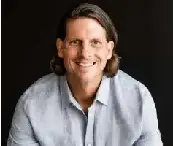
Valuable Real Estate Insights
HOMEBUYER’S GUIDE
A resource to help guide you through the homebuying experience from start to finish.
Unstoppable Starts Here
When you decide to work with a RE/MAX® agent, you can feel confident you’ve made a smart choice (and not just because RE/MAX is the #1 name in real estate1).
There’s a reason more buyers and sellers think of RE/MAX than any other real estate brand2, and it lies in our more than 50 years of experience, adaptability and evolution. We’re not a pop-up, a trend or a fad. Our roots run deep, and our experience runs wide— network-wide. You can trust the RE/MAX foundation was built strong.
Founded in 1973 by Dave Liniger and Gail Main (who became Gail Liniger), RE/MAX stands for “Real Estate Maximums.” The new name and concept intended to disrupt the industry by creating an innovative, entrepreneurial culture that affords its agents and franchisees the flexibility to operate their businesses with greater independence.
And disrupt it did.
Now, with more than 140,000 agents in over 9,000 offices and a presence in over 110 countries and territories, nobody in the world sells more real estate than RE/MAX3.
It took unstoppable grit, continuous learning, agile navigating and, most of all, passion. That’s why we’re proud that our network has more real estate sales experience than other real estate agents so that you can have confidence in any market with a RE/MAX agent.
1Source: MMR Strategy Group study of unaided awareness. 2Source: MMR Strategy Group study of unaided awareness among buyers, sellers, and those planning to buy or sell; asked, when they think of real estate brands, which ones come to mind? 3As measured by total residential transaction sides.

Selling a home can be complicated—you’re probably trying to purchase another property while selling this one. Using a REALTOR® will save you time and money by setting the correct price for your home, marketing and showing your property, advising you about the pros and cons of offers submitted for your home, helping you negotiate favorable terms, and negotiating on your behalf.
Find a REALTOR®
Set a Price
If you ask too much, you may not find a buyer. If you price the home too low, you’ll cheat yourself out of money. Websites with quickie value estimators aren’t the way to determine the value of your home. Go to the only people with the data and the expertise to accurately read your market: REALTORS®.
Market Your Property
In preparing your home for viewing by prospective buyers, remember that people buy on emotions. Your home has to feel right or buyers will look elsewhere. Look at your home objectively and listen to suggestions from your agent about ways to make your home more appealing, such as cleaning, decluttering, removing personal items, making cosmetic repairs, etc.
Consider Your Options
When a buyer makes an offer, what do you do? Your REALTOR® will help you review it. If you’re lucky enough to have more than one offer, he or she will discuss your options to do what’s best for you. Once an offer is accepted by you and the buyers, the buyers will perform inspections and finalize the deal.
Some of my favorite Lenders
David Watlington
Loan Originator | NMLS 2051851
P: (469) 966-9297
cardinalfinancial.com
The Rob Ellis Team
Rob Ellis
Senior Loan Officer NMLS# 185005
Office: Rob (972) 658-2356
Carolina Espinoza
Se Habla Español
Loan Officer | NMLS# 850464
O: (972) 295-9386
M: (469) 233-9505
F: 800.915.0616
www.Carolina-Espinoza.com
375 Cedar Sage Dr., Suite 250 • Garland, TX 75040
Nicoleta Tripon
Loan Originator NMLS#1390224
Mid America Mortgage, Inc.
2200 Pool Rd. Suite 204, Grapevine, TX 76051
D: (469) 401-5120
Nicoleta.Tripon@midamericamortgage.com


Homebuyer’s Glossary
By familiarizing yourself with these homebuying basics, you’ll be better equipped to make informed decisions and a wise investment.
1. Amortization. The length of time allotted to paying off a loan – in homebuying terms, the mortgage. Most maximum amortization periods in the U.S. are 30 years, but options vary. Consult your mortgage lender to determine what is right for you.
2. Balanced market. In a balanced market, there is an equal balance of buyers and sellers in the market, which means reasonable offers are often accepted by sellers, and homes sell within a reasonable amount of time and prices remain stable.
3. Bridge financing. A short-term loan designed to “bridge” the gap for homebuyers who have purchased their new home before selling their existing home. This type of financing is common in a seller’s market or when life events happen and affect timing, allowing homebuyers to purchase without having to sell first.
4. Buyer’s market. In a buyer’s market, there are more homes on the market than there are buyers, giving the limited number of buyers more choice and greater negotiating power. Homes may stay on the market longer, and prices can be stable or dropping.
5. Closing. This is the last step of the real estate transaction, once all the offer conditions outlined in the Agreement of Purchase and Sale have been met and ownership of the property is transferred to the buyer. Once the closing period has passed, the keys are exchanged on the closing date outlined in the offer.
6. Closing costs. The costs associated with closing the purchase deal. These costs can include legal and administrative fees related to the home purchase. Closing costs are additional to the purchase price of the home.
7. Comparative market analysis. A comparative market analysis (CMA) is a report on comparable homes in the area that is used to derive an accurate value for the home in question.
8. Home inspection. The home inspection is performed to identify any existing or potential underlying problems in a home. This not only protects the buyer from risk, but also gives the buyer leverage when negotiating a purchase price.
9. Condominium ownership. A form of ownership whereby you own your unit and have an interest in common elements such as the lobby, elevators, halls, parking garage and building exterior. The condominium association is responsible for maintenance of building and common elements, and collects a monthly condo fee from each owner based on their proportionate share of the building.
10. Contingencies. This term refers to conditions that have to be met in order for the purchase of a home to be finalized. For example, there may be contingencies that the mortgage loan must be approved or the appraised value must be near the final sale price.
11. Deposit. An up-front payment made by the buyer to the seller at the time the offer is accepted. The deposit shows the seller that the buyer is serious about the purchase. This amount will be held in trust by the agent or lawyer until the deal closes, at which point it is applied to the purchase price.
12. Down payment. The down payment is the amount of money paid-up front for a home, in order to secure a mortgage. In the US, down payments typically range from 3.5% to 20% of the home’s total purchase price. Down payments less than 20% of a home’s purchase price may require mortgage loan insurance. The selling price, minus the deposit and down payment, is the amount of the mortgage loan.
13. Equity. The difference between a home’s market value and the amount owed on the mortgage. This is the portion of the home that has been paid for and is officially “owned.”
14. Fixed-rate mortgage. A fixed-rate mortgage guarantees your interest rate for a predetermined amount of time.
15. Home appraisal. A qualified professional provides a market value assessment of a home based on several factors such as property size, location, age of the home, etc. This is used to satisfy mortgage requirements, giving mortgage financing companies confirmation of the mortgaged property’s value.
16. First-time homebuyer assistance. Various programs exist across the US to help first-time homebuyers. Consult your mortgage lender for options you might want to consider or options for which you might qualify.
17. Land survey. A land survey will identify property lines. Simply put, it helps define what is yours and what isn’t. It is not required to purchase a house, but it is recommended and may be required by the mortgage lender. A land survey is important if issues arise between neighbors or the municipality, should the owner wish to make changes in the future involving property lines.
18. Seller’s market. In a seller’s market, there are more buyers than there are homes for sale. With fewer homes on the market and more buyers, homes sell quickly in a seller’s market. Prices of homes are likely to increase, and there are more likely to be multiple offers on a home. Multiple offers give the seller negotiating power, and conditional offers may be rejected.
19. Mortgage pre-approval. A mortgage pre-approval helps buyers understand how much they can borrow before going through the mortgage application process. Allows you to make an immediate offer when you find a home, since you know how much you’ll be approved for this lender, and locks in the current interest rate for a period of time, insulating you against near-term rate increases.
20. Title insurance. Title insurance is a policy designed to protect both yourself and your mortgage lender from financial loss or damages caused by potential title defects such as code violations or legal complications. Requirement of title insurance varies, so check with your RE/MAX agent for more information regarding your specific situation.
21. Mortgage loan insurance. If your down payment is less than 20% of the purchase price of the home, mortgage loan insurance may be required. It protects the lender in case of payment default. Contact your mortgage lender if you have questions.
22. Offer. An offer is a legal agreement to purchase a home. An offer can be conditional on a number of factors, like financing or the home inspection. If the conditions are not met, the buyer can cancel their offer.
ROOFING
Roof 2 Roof
8901 Edinburgh Lane Rowlett, TX 75089
(972) 412-5880
Website: roof2rooftx.com
Email: roof2roof@yahoo.com






